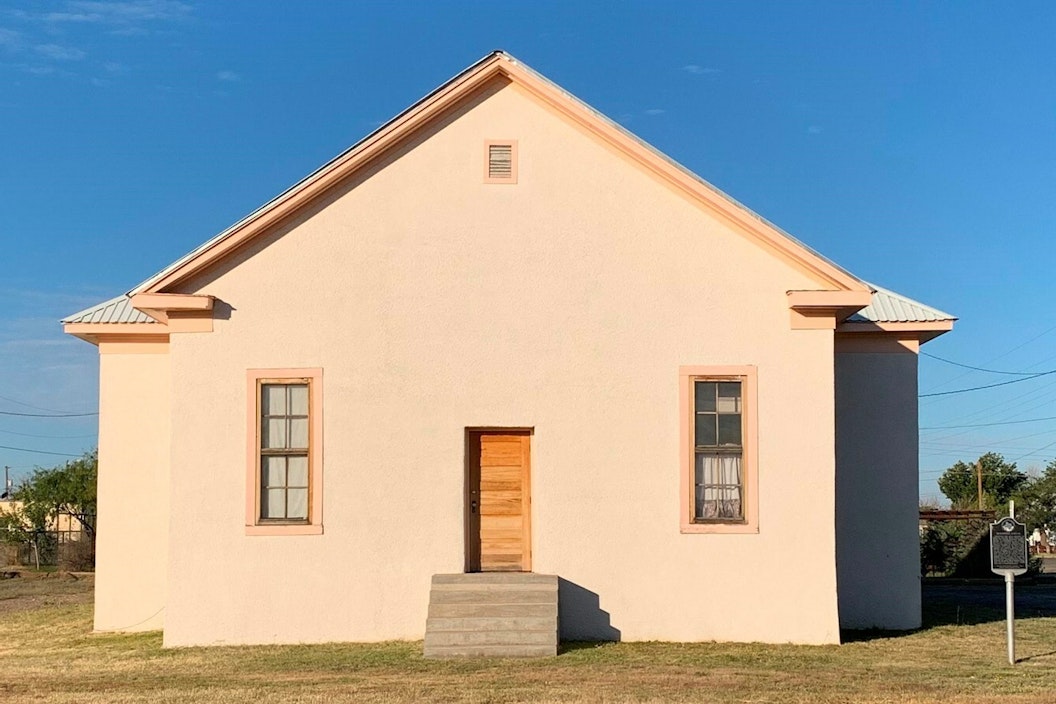
From 1909 to 1965, Blackwell School was the sole public education institution for Mexican and Mexican American children in Marfa, Texas.

For 56 years, the Blackwell School educated students of Mexican descent in Marfa, Texas as part of a segregated school landscape. Now, thanks to support from the National Park Foundation, the Blackwell School National Historic Site exists as part of the National Park System. It is now forever protected, sharing with present and future generations the stories of the students who attended the school, the history of prejudice in this country, and the unique challenges and contributions of the Mexican American community in Marfa and more broadly.
From 1909 to 1965, the Blackwell School served as the segregated elementary and junior high school for children of Mexican descent in the West Texas town of Marfa. It was the primary public school option for Mexican and Mexican American children. This school had limited resources, which were often outdated textbooks and substandard furniture and equipment, and students were instructed to literally bury the Spanish language.
When the Blackwell School was slated for demolition in 2006, former students and descendants formed the nonprofit Blackwell School Alliance to save the building and ensure that the school’s history and their experiences as students were not forgotten.
In 2022, President Biden signed legislation to designate the Blackwell School National Historic Site Act to permanently protect the site in remembrance of the nation’s history of racial segregation in education and to continually honor the struggles and victories of Hispanic and Latino communities like those in Marfa.
According to the park’s legislation, however, the National Park Service could not formally establish the site without first acquiring the 0.77-acre tract of land containing the two-room adobe schoolhouse.

With the support of donors committed to the full preservation of Blackwell’s history, NPF facilitated NPS’ acquisition of the schoolhouse building from the school district in June 2024 by funding the purchase price of the property as well as due diligence for the real estate acquisition.
The purchase enabled the official establishment of Blackwell School National Historic Site as the nation’s newest national park in July 2024. The project was assisted by the Blackwell School Alliance and the National Parks Conservation Association.
Being established as a national park will permanently protect the school and support its sharing of the largely untold history of communities that created separate schools for Mexican and Mexican American students. It also further expands the types of stories that NPS tells through its network of 431 national park units.
Since facilitating the land purchase, NPF is continuing to support the park and partners like the Blackwell School Alliance to fully open the site for visitors.
Mexican American schoolchildren were segregated in Texas and across much of the south in the 19th to mid-20th century. While segregated schools were not mandated by Texas law, school districts practiced de facto segregation for decades.
In 1909, the Marfa school district established a separate two-room school building for Mexican American students. It’s an example of the practice of “separate but equal” education. Known originally as the Ward or Mexican School, the school was later renamed for its longtime principal Jesse Blackwell.
The school served hundreds of Hispanic children up to the eighth grade. Students at the Blackwell School were not only forced to only speak English on campus but were punished for speaking Spanish. At one point, a teacher made students write Spanish words on pieces of paper and bury them in a small coffin as part of a funeral ceremony for the language.

The Blackwell School closed in 1965 once the Marfa Independent School District was integrated. The school building today serves as a means to understanding the history and impact of prejudice and segregation on the Marfa community and similar places nationwide.
Today, the park consists of the original 1909 adobe schoolhouse and a smaller 1927 classroom building known as the Band Hall. Both maintain the original adobe structure and clay tile construction that reflect local building methods at the time.
Visitors to the park can explore photographs, memorabilia, and interpretive panels that feature quotes and stories from students and teachers. The park site will continue to expand in terms of interpretive elements as NPS builds out its plan for the park in partnership with the local community and existing partners.
For more information on the park, see here.
Learn more about NPF’s work in Land Conservation and Latino History and Culture and how you can contribute to preserving America’s natural and cultural resources.